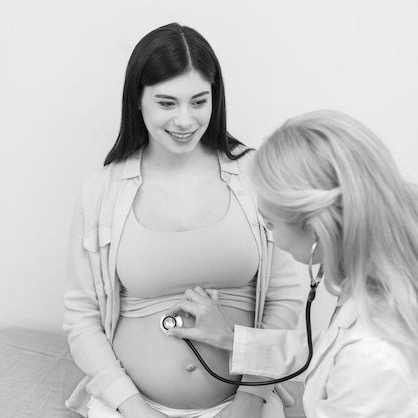In general, infertility is defined as a couple’s inability to conceive a child after one year (or more) of unprotected intercourse. Since it is known that female fertility decreases with age, it makes sense for women aged 35 and older to consult a reproductive specialist at the Bogolyuby Medical Center after just six months of unsuccessful unprotected intercourse. Some specialists classify infertility as “idiopathic” only after two years and initial diagnostic evaluation. This condition occurs in about 15% of couples experiencing conception difficulties.
Couple fertility
Why do we talk about a couple’s fertility rather than individual reproductive ability? Because conception difficulties affect both partners, even if the apparent cause lies with only one of them. In fact, natural reproduction occurs only through the interaction of both gametes, including assisted fertilization methods. Therefore, it would be meaningless to discuss this issue from the standpoint of an individual. Interestingly, couples with idiopathic infertility who separate and later form new relationships often do not encounter the same problem. Not understanding this seeming “illogicality,” researchers continue to look for hidden risk factors, such as microscopic changes in the vaginal environment — microbiological, immune, inflammatory, biochemical, and so on.
What are the causes of idiopathic infertility?
By definition, idiopathic infertility excludes the possibility of identifying its main causes. Obviously, with each new discovery, the number of idiopathic cases decreases while the number of known causes increases. The relatively high rate of failure among apparently healthy couples undergoing procedures such as in vitro fertilization (IVF), preimplantation genetic testing, and blastocyst transfer has prompted scientists to consider possible post-implantation causes — which are often linked to the vaginal environment.
Microbiota and female fertility: what is the connection?
It has been proven that successful pregnancy requires both normal function of the reproductive endocrine system and a healthy vaginal ecosystem. Age, hormone levels, fallopian tube patency, and vaginal pH all significantly influence the composition of the vaginal microbiota, which in turn correlates with the health of the environment in which the embryo will develop.
In fertile women, the microbiota is normally dominated by lactobacilli, which are stimulated by estrogen and responsible for acidifying the environment. In contrast, Escherichia coli, Streptococcus agalactiae, and Prevotella intermedia should be present only in very small quantities. Women with fallopian tube obstruction, long menstrual cycles, and vaginal pH > 4.5 (thus more alkaline than normal) show higher concentrations of Escherichia coli in the vagina.
Escherichia coli, Streptococcus agalactiae, and Prevotella intermedia can be used as biomarkers reflecting pathological conditions of the endocrine and female reproductive systems. Based on this, it is logical to assume that any changes in the microbiome should be considered an important “warning signal.”
Changes in the vaginal microbiome correlate with female infertility. It is well known that pathological alterations in the composition of microorganisms inhabiting the vaginal environment are a risk factor for reduced fertility in couples.
Can some beneficial bacteria provide measurable benefits?
In this regard, several studies have focused primarily on Lactobacillus crispatus. It has been found that many women who struggle to conceive have a deficiency of lactobacilli and an abundance of non-physiological strains. Moreover, dominance of L. crispatus is associated with a higher probability of success among couples undergoing various types of IVF, while low levels of L. crispatus are linked to a lower probability. Considering the low rate of side effects, attempts to improve the vaginal microbiota may be quite reasonable.
Number of views: 279



















